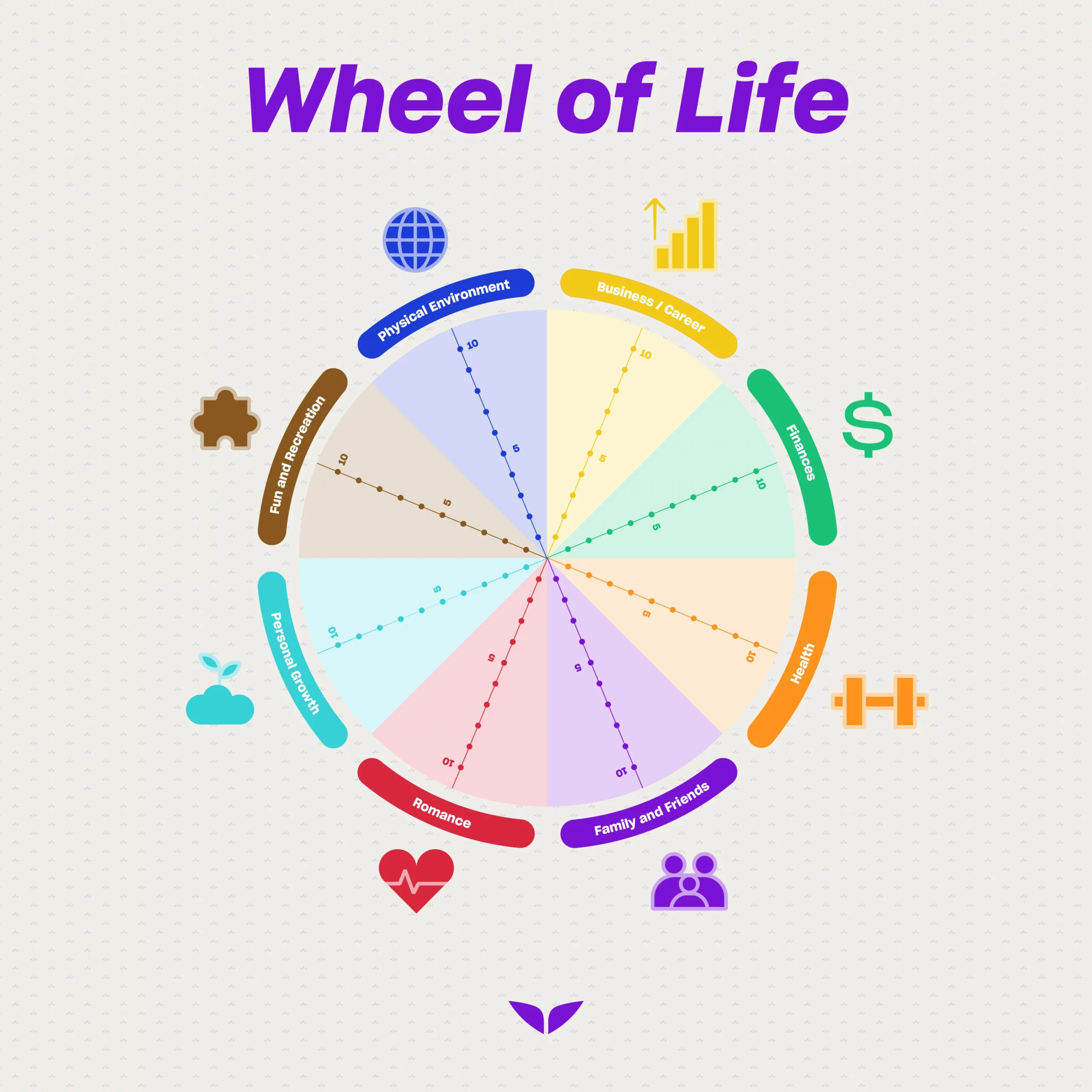Living a great life is different for everyone. As a coach, you know that it starts with defining what that means to you personally.
When you work with clients, your job is to help them identify what an ideal life looks like for them and then guide them to understand what they need to do to get there. The Wheel of Life, according to Mindvalley Coach co-founder Ajit, can help you do that through the process.
What is the Wheel of Life?
The Wheel of Life exercise is a very simple personal growth tool that helps you evaluate your life as it is and define where you want it to be. It’s a great exercise for both self-coaching and working with clients who seek more awareness of their life vision and a balanced life.
Reviewing their lives through this lens helps them prioritize what matters most to them. It helps them reflect on what’s missing and visualize which direction they want to take in the future.
By using this self-assessment tool, they will understand:
- What’s important to them,
- Where they currently are on the journey of their lives in various areas, and
- Where they really want to be in the future.
The 10 categories of the Wheel of Life assessment
Life has many dimensions. These 10 categories help break down one’s overall life vision into distinct categories to help with self-reflection.
- Personal growth: How focused are you on your growth and transformation? How much time do you spend every day learning and developing yourself?
- Romantic love: Do you feel happy and fulfilled in your romantic life? How important is this category to you?
- Family and friends: How is your relationship with your family and your friends? What kind of bond do you have with them, and what role do they take up in your life?
- Health and well-being: How focused are you on your physical and mental health? Do you have a goal to improve your fitness or longevity?
- Finances: Are you happy with your finances? Are you financially secure, literate, and fulfilled? How important is this category to you?
- Business and career: How important is your career or business in your life? What are your goals here?
- Physical environment: Is your immediate physical environment—your room, your house, the people you’re surrounded with—serving you well? Is it nourishing you? Or is it something you need to redesign?
- Fun and recreation: Do you have fun and recreation in your life? How is it included in your daily routine?
- Contribution: How are you contributing to the world? What gifts do you have that you could share with others?
- Spirituality: What spiritual beliefs and practices do you have? How do you feel aligned with the universe or higher power you believe in?

How to use the Wheel of Life
Using the Wheel of Life template is simple. Here’s how you can apply this tool in your next coaching session:
1. Draw the wheel
The first step to applying this tool is to draw a wheel (a circle) on a piece of paper or your screen. Leave room within the circle so you can later fill it with plenty of details.
2. Divide the wheel into distinct categories
Divide the wheel into the ten categories mentioned above, or select the categories that your client wants to focus on and evaluate. Split the circle accordingly and write down the name of each category.
3. Rate the categories in order of importance
This step is crucial. Ask your client to rate each category in order of importance. For example, if their most important priority in life is Personal Growth, ask them to rate it as one. If the least important category is Romance, they should give it a 10, and so on.
4. Compare their current state vs. ideal state
Ask your client to rate each category between one and 10 based on where they stand right now in that area of life. If they are not content with that category at all, rate it as one; if they couldn’t imagine it getting any better, give it a 10.
Next, help them reflect on what their ideal state would look like in each category. Personal growth isn’t about scoring 10/10 in every single area of our lives. We all have different priorities—and limited time. Ask your client to give a number between one and 10 to each category based on where they want it to be.
5. Identify the gaps and prioritize your work
Look at your client’s Wheel of Life and identify the categories that most matter to them. Help them reflect deeper to understand where they want to take each category.
Pay attention to the biggest gaps between their current life and the one they envision for themselves. Prioritize your coaching work together based on this information.
What happens next?
With the Wheel of Life assessment in front of you, you have a holistic view of your client’s life. It’s a simple evaluation that empowers you to ask the right questions, such as…
- Which area of life does my client need the most help with?
- Is that area a priority for them?
- Is that area interconnected with another one? And if so, how do I create a plan that helps both life categories?
Apply this powerful tool with your clients to help them understand where they need to put more attention in their personal development journey.
And if you’re ready to take your coaching practice to the next level, join us for the free Become a Mindvalley Certified Life Coach masterclass.
In it, you’ll learn how to transform your passion for coaching into a purposeful profession that uplifts you and those around you.









